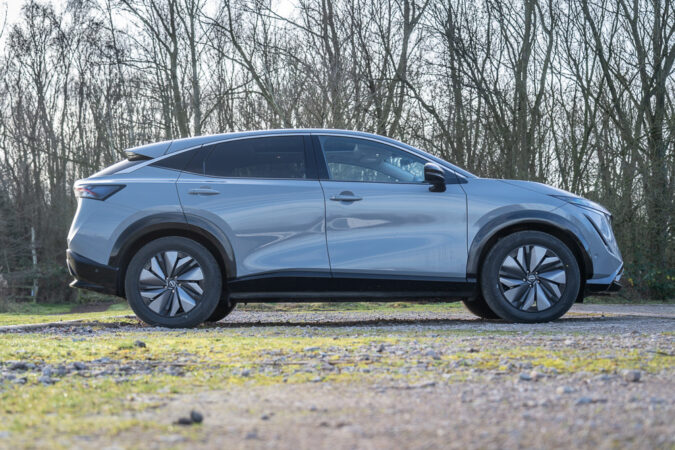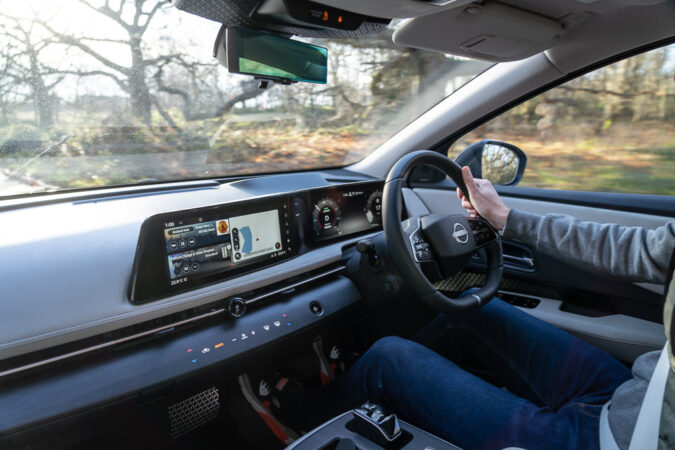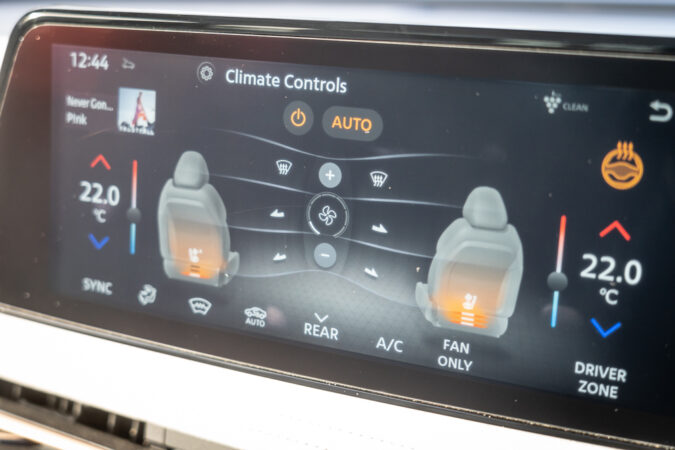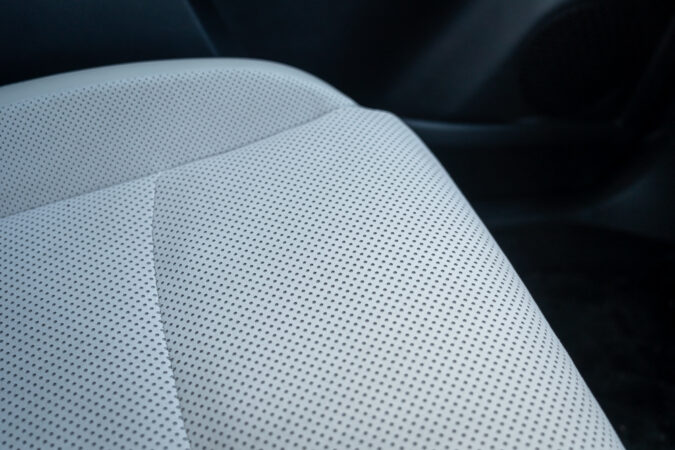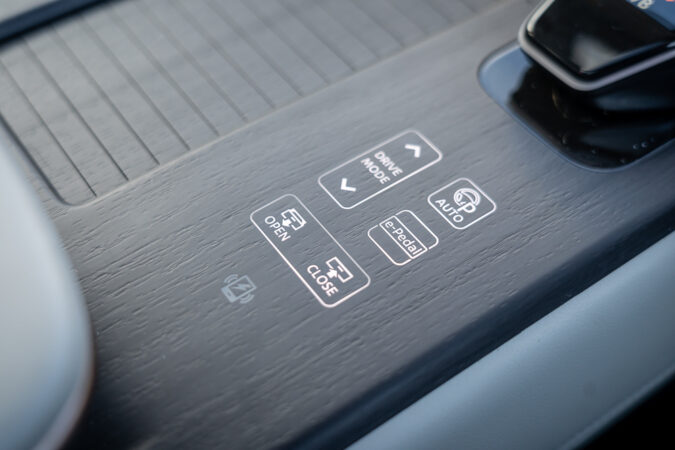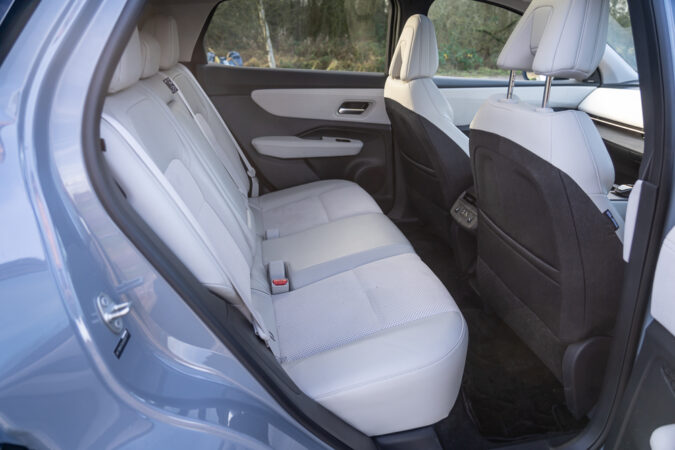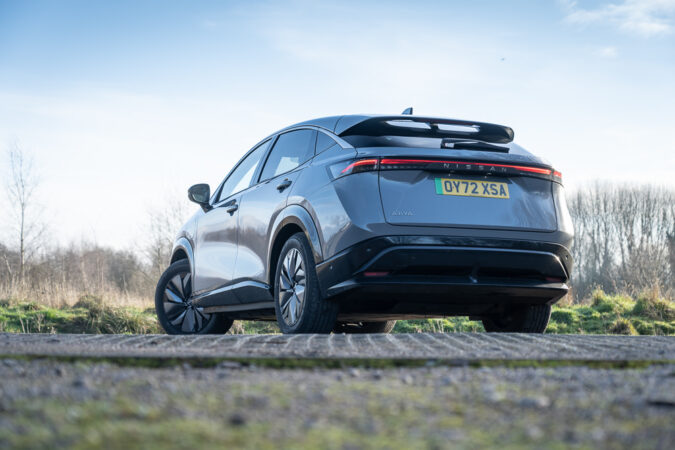The Nissan Ariya is certainly among the more impressive EVs that I’ve driven thus far, and it’s a very good stab at the EV market from Nissan, at least on the more premium side of the price range. While I’ve driven two other Ariyas in the past, I’ve got another one to test out here and share some of my thoughts with you. The key differentiation this time around is that this particular model that I’ve got here and now is the single-motor version, with an 87kWh battery pack.
It’s just another way of Nissan further cementing what is no doubt one of the best electric vehicles that you can get on the market today, and from what I’ve experienced, there’s really not a whole lot to not like about it. Plus, this Evolve trim that packages the entire thing adds even more luxuries and refinement to an already excellent vehicle. While you could definitely get more from the dual-motor model that sits on top of it, this single-motor Ariya is all you really need.
What Is The Nissan ARIYA Evolve About?
Design-wise, the Ariya has a pretty futuristic aesthetic, and rather than opting for more of the gimmicky cyberpunk touches and sci-fi tricks that some other EVs have, the Ariya stands out rather well on its own, with its distinctly functional and practical approach. There’s enough aggression and sportiness on Nissan’s new and fancy Ariya, courtesy of some strong lines and sharp angles in its silhouette, but with an abundance of elegance, too.
The entirety of the front fascia is taken up by a large faux grille, which almost looks like a see-through glass cover, unravelling some nice etchings and vane-like machining of the trim underneath. Meanwhile, the slim headlights on the front are accompanied by an equally slim lightbar on the back. It’s further clear that aerodynamics are taken seriously on the Ariya, which is primarily dominated by those turbine-style aero-disc alloy wheels, aided by a tiny rear spoiler on top of the rear hatch.
How Does It Drive?
One other thing that’s vital to understand with the Nissan Ariya is the key differentiation between the many trim levels and variations that you could get. Mine here has the bigger 87kWh battery pack (more on that in a minute), in the Evolve trim. As I mentioned earlier, I’ve driven two other Ariyas before, and both of them have the Evolve trim fitted; one with the entry-level 63kWh battery pack, and the other with a similar 87kWh battery pack, but the latter comes with Nissan’s e-4ORCE dual-motor set-up (which also comes with all-wheel drive).
Between those two, this particular trim that I’ve got here, I think, is the best and most ideal sweet spot of the two – more range than the entry-level model (courtesy of a larger battery), and you don’t really need that dual-motor configuration and the e-4ORCE all-wheel drive system for most day-to-day scenarios. This single-motor Evolve trim (with its 87kWh battery) that I have here has more than enough performance to deal with your regular A-to-B commute.
You get 300Nm of torque and 242PS (around 239bhp), and it’s all that’s really required. It might not have lightning-fast acceleration or mind-blowing traction in and out of sharp corners, but it’s more than sufficient for getting you to and from work, ferrying your kids to school, and heading down to your local Tesco’s on the weekends. Plus, without that heavy all-wheel drive system weighing the Ariya down, you’ll get to enjoy even more range, which is claimed to be around 322 miles (WLTP) – I’ll have more to say later about its range and charging.
Personally, this single motor Evolve trim is also, having driven the e-4ORCE one not too long ago, a much more serene, calm, and relaxed driving experience. I’ve not really missed that need for speed or the outright pace of the dual-motor variant, either. As such, for most people out there, the single-motor Evolve trim is probably the best trim of the Ariya that you can spec right now, and when taking into account its value proposition.
What Is It Like Inside?
Practicality is, as you would expect from Nissan, is a solidly positive experience all around. There’s a voluminous rear boot, with more than enough room for your weekly visit to the grocers, or a week’s holiday worth of luggage in there, aided by a plethora of underfloor cubbies and additional storage on the sides. The electric tailgate helps out, too. Therefore, having that big battery pack and electric motor doesn’t seem to have impeded on either the boot or cabin space.
Speaking of, the cabin is a rather pleasant place to be, and given that the Ariya is a tad more expensive than most Nissans that you’re used to seeing, it does, subsequently feature more premium touches in here. In my particular example, the Ariya here is fitted with heated seats (front and rear) and a heated steering wheel, with automated heating options for the climate control. It’s a really comforting refuge from the chilly weather outside once you step into the Ariya.
My example here even has a panoramic glass roof, which further adds to the airiness and the openness of the cabin. On that note, because the Ariya is an EV and doesn’t have a chunky transmission tunnel, there’s no divider separating the front passenger and driver seats, further adding to the open feeling of the Ariya’s interior. The choice of materials in its upholstery is equally good, between the cushy leather seats, suede bits here and there, in addition to the wood trim.
Much of that wood trim (which feels like the real deal) is found on the front; along the dashboard, centre stack, and the centre console. Here, we’ll come across one of the more divisive aspects of the Ariya’s design, and that is its use of touch-sensitive buttons for most of your in-car controls, rather than actual, analogue buttons. This cluster of touch-sensitive buttons encompasses most of the things that you’ll have to fiddle with, including the climate control, your drive modes, e-Pedal driving mode, opening or closing the glove box, and so on.
Even the wireless charging pad for your phone passes through that same wooden trim, in fact. Admittedly, this does take some getting used to, as it doesn’t have either the satisfaction or the confidence of pressing down on a real button. However, in practice, once you do get used to it, it works just fine. Whether it’s a good alternative to real buttons is still up to debate and very much subjective, but it’s good enough for what it needs to do, honestly.
Another thing to take into account is how the wooden trim in the Nissan Ariya does attract fingerprints. So, it might be a good idea to keep a cloth just to rub off and clean those oily finger marks on the touch-sensitive haptic buttons. Thankfully, the gear selector – which is mounted atop a movable centre console, so you could move it frontward or rearward, till you find it comfortable – is a familiar Nissan unit, so there’s no need to adapt to anything weird there, as is the two-spoke wheel, which is otherwise ordinary in its controls and functions.
Elsewhere in the interior, there’s a pretty good infotainment system further at the front, which supports both Android Auto and Apple CarPlay. But, even the default system itself is intuitive and very easy to use. Equally as good is the all-digital gauge cluster, which gives you a good idea of most of the things you really need to preview while driving, including your speed, electric driving range, battery capacity, and a readout to show how much % of power you’re deploying.
There’s a good number of amenities in the Ariya to speak of too, such as the inclusion of a wireless charging pad for your phone, as I noted earlier. And, the addition of two USB ports in the middle for your rear passengers (one of them is even USB-C). One slight quirk is the amount of headroom you get if you’re sitting in the rear (legroom is fine, though). Because of that panoramic glass roof, headroom is slightly compromised, particularly for taller people like me. However, for most others of average height, or if you’re using the Ariya as a family car, then for kids or teens, it’s perfectly fine.
The Experience
I mentioned earlier the Ariya’s WLTP range of about 322 miles, which is what you get with this bigger 87kWh battery, and it’s a respectable amount for most people. This is a fairly significant step up from the entry-level 63kWh battery pack, which offers around 240-250 miles (WLTP). For folks who might consider the Ariya for long road trips, faraway commutes, or if you just want that extra security to settle your range anxiety, it’s certainly a good idea to opt for this bigger 87kWh battery, instead.
Charging it should be straightforward, too. While a slower 7.4kWh charging rate might take around 13.5 hours to top-up your Ariya’s 87kWh battery pack from near-empty to 100%, this charging time could be cut down to just 5 or so hours if you have access to a speedier 22kW charger. Additionally, the Nissan Ariya could support charging rates as speedy as 130kW, and once attached to the appropriate DC fast charger, it could manage a regular fill-up from near-empty to near-enough-full in just a smidge over 30 minutes.
This should top up the battery just enough to get you going for a while. On top of that, the total range could be extended or at least sustained ever so slightly mid-drive, with the e-Pedal driving mode active. This is what Nissan calls their one-pedal driving solution, which further beefs up the Ariya’s regenerative braking. So, that’s one way of slowing down the discharge. In the real world, the Ariya’s total range (with the 87kWh battery) is sufficient for all that I really need out of it.
Nissan ARIYA Evolve Cost
Having made a lot of comparisons between this single-motor Evolve trim of the Nissan Ariya and the dual-motor version, the other major advantage in opting for this single-motor model here is the lower cost. With a starting price of around £52,140 (a roughly £2,000+ savings by not having that all-wheel drive system and dual motors), it’s by no means a cheap car. However, for what you get, I do think it’s well worth the price, I find, for a more premium electric SUV.
It’s very well-refined, and one that has good performance, driving range, luxuries, creature comforts, practical additions, tech, as well as other features, goodies, and perks, for what you’re paying. Nissan also throws in most of the equipment you might need as standard, so there are not a whole lot of optional extras that you’ll have to think about, and it’s mainly cosmetic options, such as more premium and special paint, or a bigger set of alloy wheels.
Verdict
All in all, the Nissan Ariya is an awesome and well-put-together electric SUV. While the extreme ends of the Ariya that I’ve driven before, particularly in the Evolve trim range, might suit some folks better than others, this particular model that I have here, with its good enough single-motor configuration and a fairly large 87kWh battery, is the sweet spot of the line-up. It has more than enough performance for most, and by eschewing all-wheel drive and that extra motor, it’s cheaper to buy, comfier to drive, and you also get more range in return.
Yet, you’re still able to leverage the refinement of the Nissan Ariya as a whole, including its premium and upscale interior, and well-rounded suite of tech and gadgets, as well as a practical and utilitarian approach. It’s an impressive EV overall, and the Nissan Ariya is undoubtedly one of the best options that you can get in an ever-growing and competitive segment. You get a lot for the money, and from what I’ve seen and experienced so far with the Ariya, I’m left with a far more positive impression of what Nissan has in store for its electric future.
Specification
Nissan ARIYA Evolve Specs
- Price: £52,140
- Engine: Single-motor with an 87kWh battery
- Power: 239bhp
- Torque: 300Nm
- 0-62mph: 7.6 seconds
- Top speed: 100mph
- Weight: 2,093kg
- Economy combined: 322 miles (WLTP)
- CO2: 0g/km











